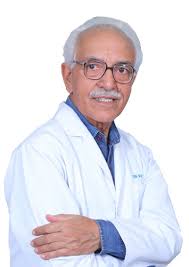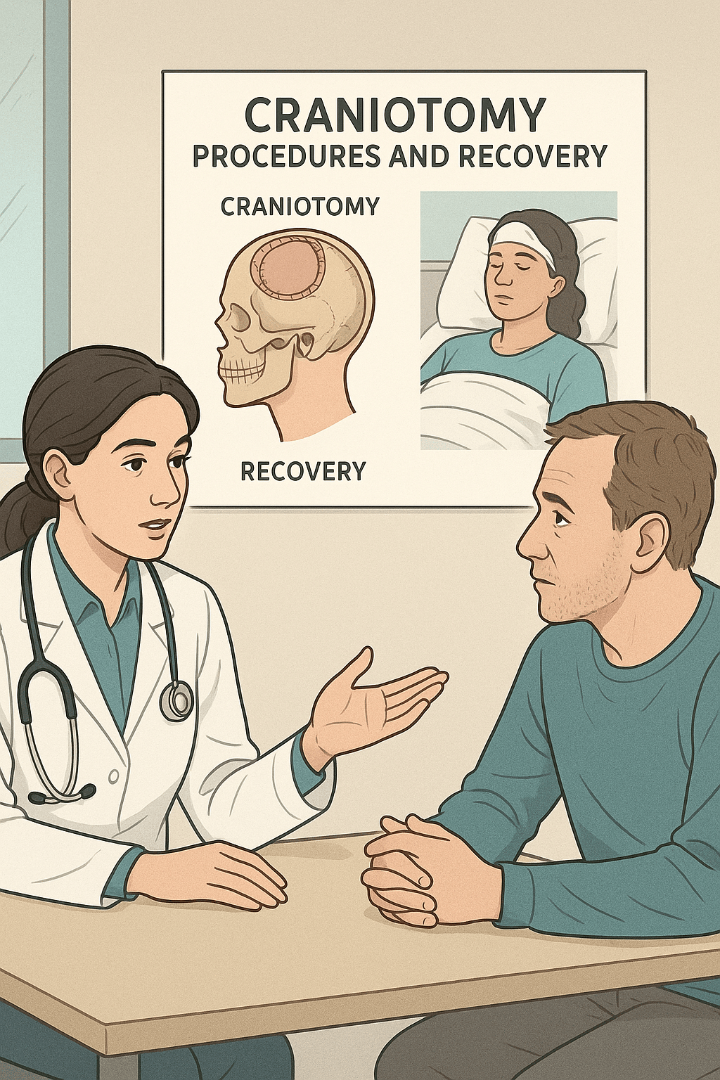What is Ankle Fusion and When Is It Needed?
Ankle fusion, or ankle arthrodesis, is a surgical technique that involves joining the bones of the ankle joint—usually the tibia, fibula, and talus—using screws, plates, or rods. The purpose is to eliminate the motion at the joint, thereby reducing pain caused by bone-on-bone contact or joint instability.
This procedure is typically recommended when:
- A patient suffers from end-stage ankle arthritis, where cartilage is severely damaged.
- Conservative treatments such as medications, physical therapy, and injections have failed.
- There is severe deformity or instability in the ankle due to trauma, infection, or congenital disorders.
- The patient experiences chronic pain, swelling, and difficulty walking due to joint degeneration.
Ankle fusion is a reliable and effective option for long-term pain relief and functional improvement.
What Are the Different Types or Techniques of Ankle Fusion Surgery?
There are several surgical techniques used for ankle fusion, depending on the condition of the joint, surrounding bones, and patient preference:
- Open Ankle Fusion: This traditional technique involves making a larger incision to access the ankle joint, removing the cartilage, and placing hardware to hold the bones in place until they fuse.
- Arthroscopic Ankle Fusion: A minimally invasive technique using small incisions and a camera to guide the procedure. This method often results in less pain and a quicker recovery time.
- Tibiotalar Fusion: Fusion of the tibia and talus bones, commonly used in severe arthritis or deformity.
- Tibiotalocalcaneal Fusion: This technique fuses the tibia, talus, and calcaneus (heel bone), typically in cases involving subtalar joint arthritis or complex deformity.
- External Fixation Fusion: Sometimes used for patients with compromised soft tissue or infection risk, where external rods and pins stabilize the ankle.
The choice of technique depends on factors like bone quality, severity of deformity, presence of infection, and surgeon expertise.
What is the Standard Treatment Protocol for International Patients in India?
India offers a structured and personalized treatment journey for international patients undergoing ankle fusion:
- Pre-arrival Teleconsultation: Patients can consult with orthopedic specialists online, submit imaging reports, and receive a preliminary opinion and treatment plan.
- Arrival and Admission: Upon arrival, patients are admitted for evaluations, blood tests, X-rays, CT/MRI scans (if needed), and anesthetic clearance.
- Pre-operative Planning: The surgical team confirms the type of fusion needed, reviews implant options, and prepares for surgery.
- Surgical Procedure: The operation is conducted under general or regional anesthesia. Post-surgery, patients are moved to recovery and monitored closely.
- Post-operative Care and Physiotherapy: Patients receive pain management, physiotherapy guidance, and wound care. A splint or cast is applied.
- Discharge & Rehabilitation Plan: After 3–5 days in the hospital, patients are discharged with a clear rehabilitation schedule and tele-follow-up appointments.
This protocol ensures safety, comfort, and transparency for international patients throughout their medical journey.
What Kind of Devices, Implants, or Surgical Tools Are Used?
In ankle fusion surgery, high-quality orthopedic implants and surgical instruments are used to ensure a successful fusion:
- Screws and Plates: Titanium or stainless-steel screws and anatomical plates help stabilize the joint. These materials are bio-compatible and corrosion-resistant.
- Locking Plates: Used for complex or osteoporotic bone structures to provide additional stability.
- External Fixators: In cases where internal fixation isn't feasible, devices like the Ilizarov frame or ring fixators are used externally.
- Bone Grafts: Autografts (from the patient’s own body) or allografts (donor bone) may be added to enhance fusion in cases of bone loss or infection.
- Advanced Surgical Tools: In arthroscopic fusion, high-definition cameras, shavers, and radiofrequency ablation tools are employed to minimize tissue trauma.
All devices used in Indian hospitals comply with international quality standards and often come from globally recognized manufacturers.
What is the Cost Breakdown of Ankle Fusion Surgery in India?
The cost of ankle fusion surgery in India is highly affordable without compromising on quality. Here's a typical cost structure:
- Pre-operative Tests & Imaging: $150 – $300
- Surgical Fees: $1,200 – $2,000
- Anesthesia & OT Charges: $500 – $800
- Implants (screws/plates): $500 – $1,000
- Hospital Stay (3–5 Days): $600 – $1,200
- Physiotherapy & Medication: $200 – $400
- Follow-Up & Discharge Services: $100 – $200
Total Estimated Cost: $3,500 – $6,000
Note: The final cost may vary based on the type of implant used, patient’s health condition, choice of room category, and surgeon’s expertise.
Why Should International Patients Choose India for This Treatment?
India has become a global leader in orthopedic surgeries due to a blend of affordability, clinical excellence, and patient-centered care. Here’s why it stands out:
- Globally Trained Surgeons: Many orthopedic surgeons in India have been trained in the UK, USA, or Europe, bringing international expertise at a local cost.
- State-of-the-Art Facilities: Modern operating rooms, high-end diagnostic equipment, and infection-controlled recovery wards ensure safe treatment outcomes.
- Affordable Packages: Transparent and bundled pricing for surgery, implants, stay, and rehabilitation minimizes financial uncertainty for patients.
- Minimal Waiting Time: Unlike some countries with long waiting lists, Indian hospitals can schedule surgeries within a few days of evaluation.
- English-Speaking Medical Teams: Smooth communication helps international patients feel comfortable and confident during treatment.
- Cultural Comfort: India has a long tradition of welcoming medical tourists and offers specialized cuisine, translators, and hospitality tailored to various cultures.
All these factors combined make India a trusted hub for complex surgeries like ankle fusion.
Why Choose Healzone for Safe and Stress-Free Treatment in India?
Healzone is a dedicated medical tourism facilitator that bridges the gap between international patients and top-tier healthcare providers in India. Here’s how Healzone ensures a seamless and hassle-free experience:
- Personalized Case Review: Healzone collects patient reports, matches them with suitable hospitals, and obtains expert opinions before arrival.
- Transparent Cost Estimates: Detailed quotes with clear breakdowns eliminate surprise charges and ensure financial clarity.
- Priority Appointments: Healzone coordinates appointments with leading orthopedic surgeons and ensures zero waiting time.
- Logistics & Travel Assistance: Services include visa support, airport pickups, accommodation booking, and language interpreters.
Dedicated Case Manager: Every patient receives a personal care manager who is available 24/7 throughout their journey. - Post-Treatment Support: Healzone also assists with remote consultations, follow-up calls, and physiotherapy guidance once the patient returns home.
By partnering with JCI-accredited hospitals and reputed surgeons, Healzone makes ankle fusion surgery in India accessible, safe, and comfortable for global patients.
What Kind of Support Do Patients Get Before, During, and After Treatment?
International patients traveling to India for ankle fusion surgery can expect end-to-end support that ensures safety, comfort, and a smooth healing journey. This is especially true when partnering with professional facilitators like Healzone, who offer tailored medical travel coordination.
Before Treatment:
- Medical Records Review: Experts evaluate medical history and radiology reports before the patient arrives.
- Virtual Consultations: Online video calls are arranged with the orthopedic surgeon to clarify concerns, explain treatment plans, and set expectations.
- Visa & Travel Assistance: Complete guidance for obtaining a medical visa, including invitation letters and document preparation.
- Transparent Estimates: Patients receive a detailed treatment plan with cost breakdowns to help plan financially with confidence.
During Hospital Stay:
- Airport Transfers & Local Transport: Smooth pickup from the airport and drop-offs for all appointments.
- Dedicated Care Coordinator: A multilingual support staff is assigned to every patient to guide them through the hospital process.
- Comfortable Accommodation: Assistance in booking nearby hotels or guest houses for patients and attendants.
- Regular Updates: Family members are kept informed throughout surgery and recovery phases.
- 24/7 Assistance: Round-the-clock help with food, mobility support, language, and any non-medical need.
After Discharge:
- Post-Surgical Instructions: Patients are given written and verbal care plans, including medications, physiotherapy, and dietary guidelines.
- Follow-Up Consultations: Online follow-ups are scheduled with the doctor after returning home.
- Rehabilitation Guidance: Healzone offers access to remote physiotherapy advice and post-op care monitoring.
- Emergency Contact Access: In case of questions or complications, patients have access to their medical team via tele-support.
This all-inclusive support system ensures that international patients never feel alone, from pre-arrival to post-recovery.











